The fast ferry from Mykonos to Tinos introduced us to the Greek ferry system. This particular ship was upscale, with a first class section and no chickens or goats. The ferry captain backed the ship into port and let down the car ramp while an officer stood on it to tell the bridge when to lower it totally, bouncing him down on the way. Kinda looked like fun. Then, as though we they were is full scale panic evacuation mode, the passengers were hurried off and we were hurried on, with crew members yelling the whole time to make sure no one dawdled. Potentially hazardous to be sure, but everyone seemed to make it aboard OK. The high winds and rough seas made the trip pretty bouncy, and it was amusing watching passengers who looked like they’d gotten into the ouzo first thing in the morning stagger around the ship. Luckily the trip was quick.
The chapel beneath the cathedral has a holy water fountain where we watched a young mother wash her son’s face in holy water, whether he wanted her to or not.
Our introduction to Tinos was with a local guide (even though I’m sure Lina could have done as good if not a better job). Tinos is not like many other islands, in that they young people actually stay on the island, taking over family businesses and maintaining their strong family bonds. It’s the home of the Monastery of Lady of the Angels, and it has many Catholics as well as Greek Orthodox villages. The Catholics became so by gaining land privileges vs. converting as a choice. Nikko took us to the Greek Orthodox Church of Panayia Evangelistria, also referred to as the Cathedral of the Assumption of the Virgin Mary. The place is so busy in August around the 15th, the celebration of the Assumption, that the locals all hightail it out of there. According to legend, a nun named Pelagia dreamed that the Virgin appeared to her and told her where to find a miraculous icon. This was in 1882, mind you. Pelagia told the bishop of Tinos about her dreams. He believed her and ordered excavations to begin. Lo and behold, the remains of a Byzantine church and then of the icon itself were unearthed. This one is believed to be the work of St. Luke, which is said to be the case with most of the early icons. The icon was initially housed in the chapel under the present cathedral, and supposedly has healing properties.
The church is made of marble excavated from Paros and Tinos, with a tall bell tower and a beautiful black-and-white pebble mosaic floor in the exterior courtyard. The road from the port to the cathedral has a carpeted path on the right, for pilgrims who choose to kneel their way to the church; we saw a couple of women doing just that. During our visit to the cathedral one of them worked her way to the red-carpeted steps of the church, and even on a very busy day like the day we visited, the line of waiting visitors would part to allow her first access to the icon. Seeing her was very moving.
Click on image to view full size
The chapel beneath the cathedral has the baptismal font and a holy water fountain where we watched a young mother wash her son’s face in holy water, whether he wanted her to or not.
Click on image to view full size
After leaving the cathedral we stopped for a quick lunch and then were bussed to the town of Pyrgos, in the hills above the port of Tinos. Tinos is known for its beautiful green marble and it’s the home of the Museum of Marble Crafts, where excavation, sculpting and finishing marble is celebrated. It’s a beautiful, cool space and interesting is it’s exploration of the fine art, tools and technology of the art of marble from the antiquities to present. And it had a lovely museum shop, where our librarians went right for the bookmarks.
Click on image to view full size
On the way to Pyrgos Nikko told us of the 1000 chapels on the island, and we were able to glimpse scores of pigeon houses or dovecotes from the 18th and 19th centuries, elaborately designed with geometric patterned sides and statues atop.
Click on image to view full size
The Venetians bred pigeons for their meat and pigeon poop is considered a grade-A fertilizer, which they used on their terraced hillside farms. It was obvious where the water sprung from on Tinos; every village we passed was green and lush, and had been built at a site where the water flowed from the hills to the sea. Pyrgos was the quintessential Greek village, with a center surrounded by tavernas under an ancient plane tree. Shops on the streets around it closed for the afternoon, a highly civilized practice if you ask me, but frustrating for those of us who wanted their thyme honey and other local goodies. Thankfully a few shops opened before we departed.
Click on image to view full size
On the way back to the port we passed beehives, sheep, cows and goats, and lots of pigeons in and out of their dovecotes.
The ferry back to Mykonos was a bit of a wild ride, delayed by wind and high seas. We were a bit concerned, as the island has no airport and if there wasn’t a ferry we’d have been stranded for the night. But it did arrive so when we returned to Mykonos we were whisked aboard the Harmony V and, with mechanical issues resolved, set sail. The ride was a rough one, and during dinner, one by one, each table’s tall glassware toppled with a high swell, and we watched passengers two-stepping on the arms of waiters attempting to cross the room to get to their cabins. Dramamine was handed out like after dinner mints. Shana proudly announced that theirs was the only table that didn’t have a problem whereupon a swell hit and all of their glassware was upended.
As they say, pride goeth…










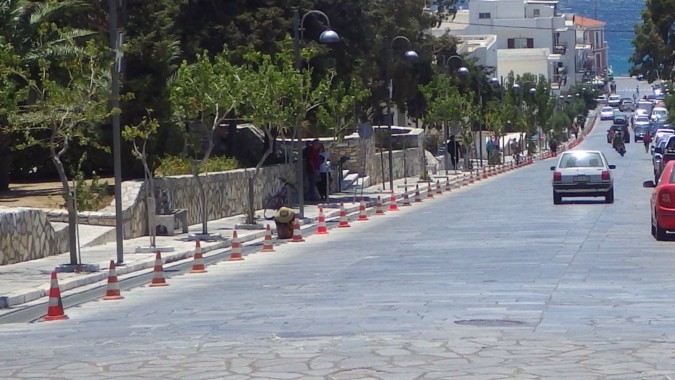
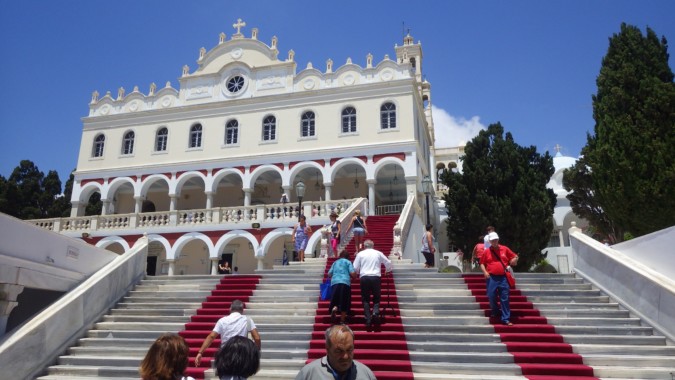



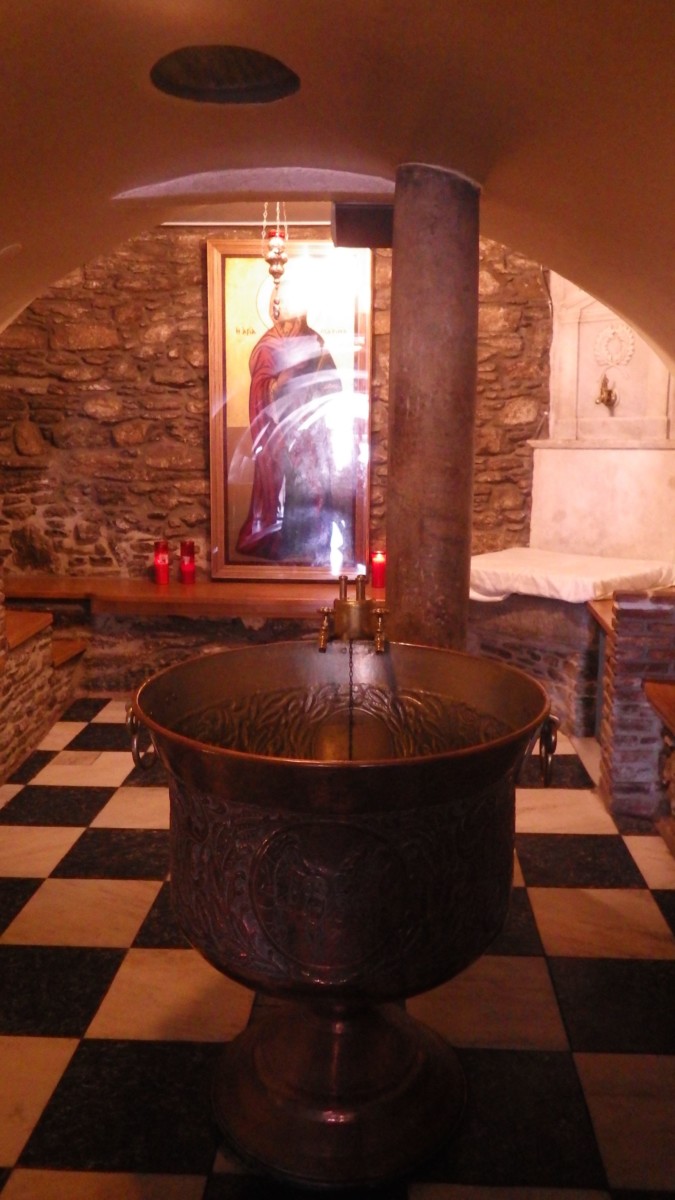
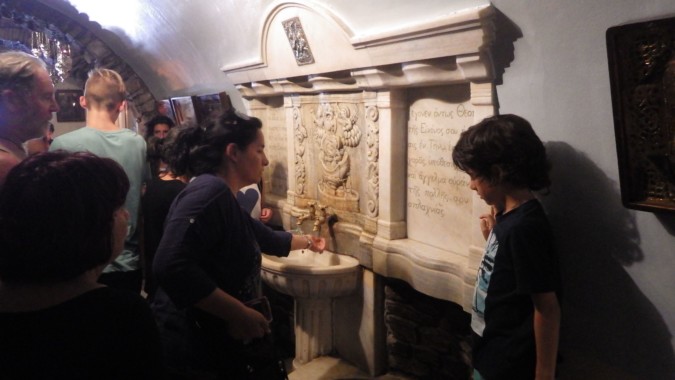



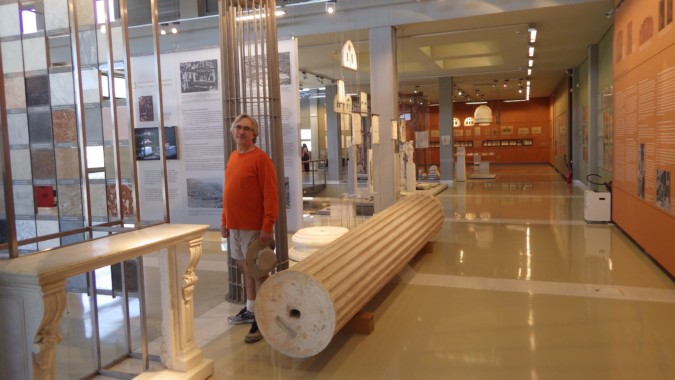
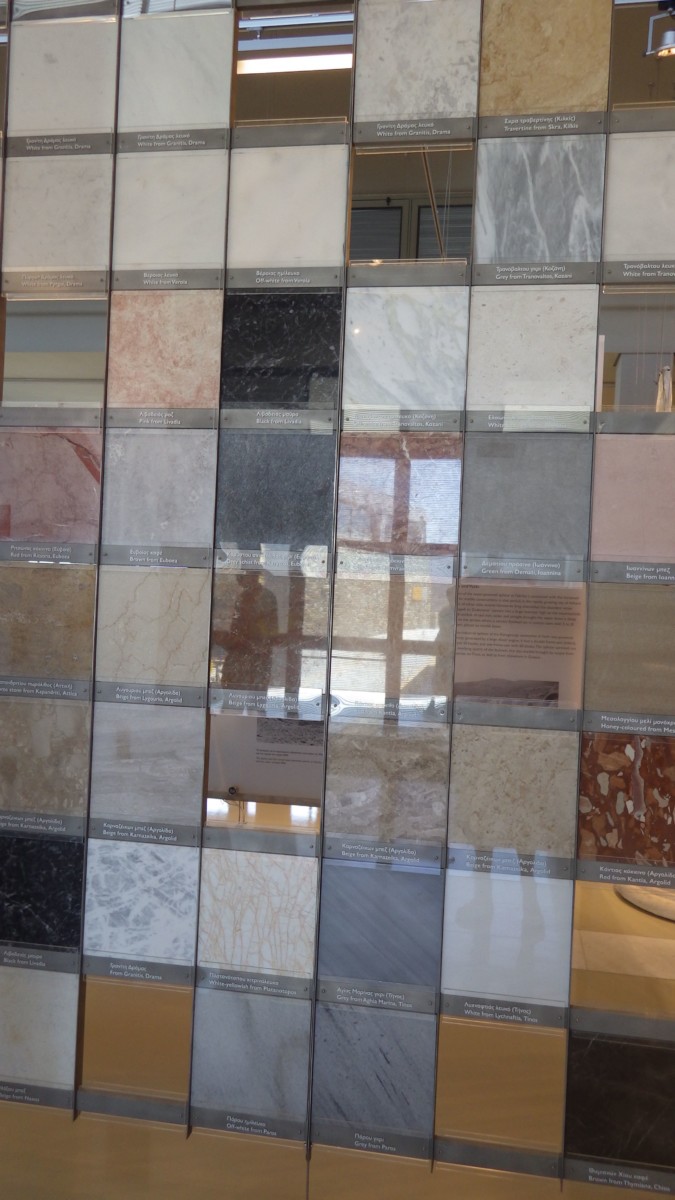


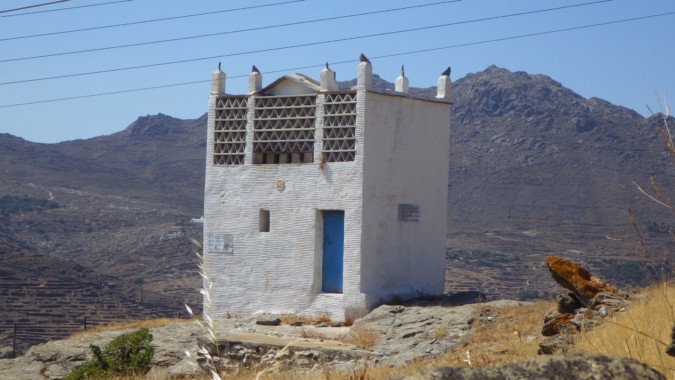
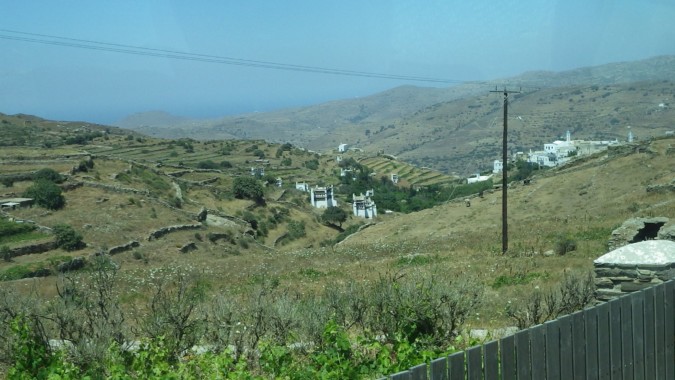




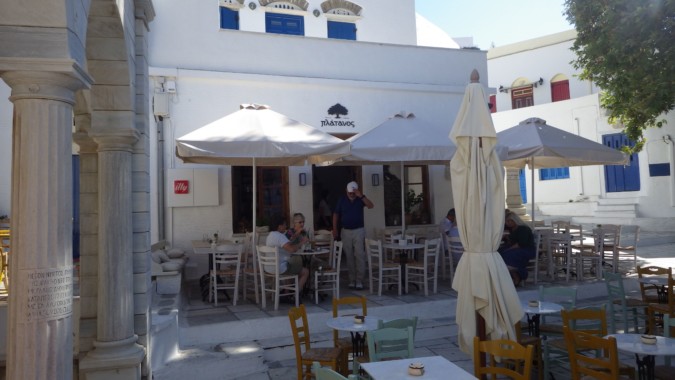
You had me “done” with the final picture. So glad that you and Stefan are experiencing and sharing these most spectacular of adventures. Gifts from above, to a duo from Deus. Thanks for lovingly sharing the majesty of His works! And that is how we roll…